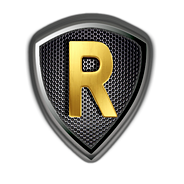Reglas y regulaciones de esports
Estas regulaciones de esports se crean de acuerdo con las regulaciones de las ligas y series de carreras de simulación del FIA Touring Car Sporting y de todo el mundo.
Reglas generales:
Los conductores deben tener una conexión a Internet estable. Mantenga un ping no superior a 150 ms (como se ve en el servidor de carreras). Los corredores de más de 150ms pueden ser expulsados del servidor.
No recomendamos utilizar este tipo de conexión: WIFI/3G/4G/GSM. Puede causar ping y retraso extremadamente altos.
Hacer trampa resultará en un baneo permanente.
Los organizadores de eventos se reservan el derecho de cambiar las reglas y condiciones vigentes en sus eventos organizados.
Clasificación:
Se utilizará una sesión de calificación para determinar la parrilla de salida para la carrera. Respete a todos los pilotos en la calificación.
Deja que otros pilotos te adelanten si van en vuelta rápida si tú no estás en una.
Deja espacio con los demás pilotos para que cada uno pueda hacer su vuelta más rápida, el qualy se hará con todos los coches en la pista
Carrera:
Las carreras no se ganan en la primera vuelta.
Existe una mayor probabilidad de arruinar la carrera de otro conductor al tomar riesgos innecesarios.
Adelantamiento:
El conductor que adelanta es responsable de hacer un adelantamiento seguro en un momento igualmente seguro.
Es responsabilidad de ambos conductores garantizar que se realice un adelantamiento seguro, de lo contrario puede resultar en una sanción.
Al entrar en una curva, el conductor que pasa debe al menos tener sus ruedas delanteras niveladas con las ruedas traseras del coche que pasa antes del punto de giro, para ganarse el derecho a una línea de carrera. En este punto, el conductor que es adelantado es responsable de despejar un carril.
El adelantamiento golpeando a otro piloto no está permitido y puede estar sujeto a penalización a menos que el conductor infractor devuelva la posición, incluso si ocurrió accidentalmente. El adelantamiento golpeando, se define como el conductor que pasa empujando el automóvil hacia adelante para hacerlo inestable y luego adelanta mientras el conductor sobrepasado intenta recuperar el control.
El bloqueo no está permitido por ningún motivo. El bloqueo se define como alterar la línea de carrera más de una vez en reacción a otro conductor en un intento de evitar ser adelantado. El bloqueo será penalizado.
Defender
1º La regla de un movimiento
Cuando un conductor está completamente por delante de otro en una recta, se le permite hacer solo un movimiento en una dirección. Este movimiento puede ser de cualquier tamaño, dentro de los límites de la pista, y el movimiento se puede hacer tan lento o tan rápido como el conductor desee.
Más de un cambio de dirección en una recta se denomina "waving" y NO está permitido.
2º Correr junto a otro coche
Si dos coches tienen alguna de sus partes al lado del otro, cada conductor debe respetar el espacio ocupado por el otro coche. No importa quién esté delante, o lo cerca que estén, no pueden iniciar un movimiento hacia el otro automóvil. Ambos conductores tienen el derecho y la obligación de seguir conduciendo en línea recta sin obstáculos.
3º Entrar en la zona de frenado
En una recta, un piloto defensor tiene derecho a cambiar repentinamente de dirección, incluso utilizando todo el ancho de la pista si está completamente por delante del piloto atacante. No se permiten cambios repentinos de dirección justo antes o dentro de la zona de frenado
4º Las pruebas de frenado no están permitidas.
Las pruebas de frenado (es decir, frenar con fuerza antes de lo normal para hacer que el conductor de detrás tome una acción evasiva o choque) también es muy peligroso y está mal visto, pero no se menciona explícitamente en el reglamento deportivo de la FIA.
Contacto intencionado
Cualquier contacto intencionado con otro coche será penalizado.
Reincorporación (Rejoin)
Si un conductor hace un trompo mientras está en la pista, debe bloquear inmediatamente los frenos hasta que se detenga por completo (incluso si todavía está en la pista) y mantener los frenos accionados hasta que pueda evaluar la situación (esperando a que se la pista se despeje). Cuando un conductor no bloquea los frenos, el automóvil es propenso a girar o girar de una manera mucho más impredecible y causar un incidente adicional. Un conductor involucrado en un incidente mientras gira en la pista y no bloquea completamente los frenos será responsable de ese incidente.
Los conductores que se hayan salido de la pista y los coches que hayan girado en la pista deberán reanudar la carrera de manera segura. Esto puede significar conducir hacia adelante o retroceder hasta un área segura para girar primero en la dirección correcta y luego incorporarse de manera segura al flujo de tráfico alejándose de la línea de carrera.
Si por alguna razón un coche queda inhabilitado permanentemente, ya sea en el pitlane, en la pista o en un área de inicio, el conductor debe regresar manualmente a los pits. Un coche parado fuera del box causará una bandera amarilla en ese área para el resto de la carrera.
Reglas de las banderas
Los conductores avisados con bandera azul, que van a ser doblados, deben ayudar al conductor que pasa a hacer un adelantamiento seguro en las siguientes 4 curvas como máximo.
Si un conductor de bandera azul puede alejarse de la condición de bandera azul, puede continuar. Sin embargo, si la condición de bandera azul vuelve a ocurrir, deben ceder en las siguientes 4 curvas.
Los pilotos doblados deben mantener su línea de carrera actual y predecible. Los incidentes que ocurran debido a cambios inesperados de línea serán penalizados.
Los conductores no pueden crear zonas de bandera amarilla permaneciendo quietos en la pista o creando un entorno peligroso para otros conductores. Los conductores deben tener cuidado bajo la bandera amarilla, deben estar preparados para encontrarse vehículos lentos, dañados o que no se mueven en la pista.
Uso de faros y bocina
Los conductores pueden encender sus luces en condiciones de poca visibilidad, el uso de la luces debe ser el apropiado con este fin. Las ráfagas no son necesarias y no debe usarse en exceso.
Limites de pista
Los conductores deben mantener un mínimo de 2 ruedas dentro de las líneas blancas en la pista en todo momento. Las líneas determinarán los límites de la pista Los conductores pueden exceder este límite de 2 ruedas para evitar un accidente o evitar otro automóvil. Los pilotos no pueden salir de pista para mejorar su tiempo de vuelta.
_____________________________________________________________________________________________________________________________________
ENGLISH VERSION
Esports Rules and Regulations
These esports regulations are created in accordance with the regulations of sim racing leagues and series from the FIA Touring Car Sporting and around the world.
General rules:
Drivers must have a stable internet connection. Keep a ping no higher than 150ms (as seen on the race server). Drivers over 150 may be kicked from the server.
We do not recommend using this type of connection: WIFI/3G/4G/GSM. It can cause extremely high ping and lag.
Cheating will result in a permanent ban.
Event organizers reserve the right to change the rules and conditions in force at their organized events.
Classification:
One qualifying session will be used to determine the starting grid for the race Respect all drivers in qualifying.
Let other drivers pass on their fast laps if you are not on one.
Leave space with the other drivers so that everyone can do their fastest lap, the quiali will be done with all the cars on the track
Race:
Races are not won on the first lap.
There is a higher chance of ruining another driver's career by taking unnecessary risks.
Overtaking:
The passing driver is responsible for making a safe pass at a safe time.
It is the responsibility of both drivers to ensure a safe pass is made.
Failure to do so may result in a penalty.
When entering a turn, the passing driver must at least have their front wheels level with the rear wheels of the passing car before the turning point, to earn the right to a racing lane. At this point, the driver being passed is responsible for clearing a lane.
Slam passing is not permitted and may be subject to penalty unless the offending driver returns the pass, even if it happened accidentally. Slam passing is defined as the passing driver pushing the car forward to make it unstable and then passing while the passed driver is regaining control.
Blocking is not allowed for any reason. Blocking is defined as altering the racing line more than once in reaction to another driver in an attempt to avoid passing. Blocking will be penalized.
Defend
1º The rule of a movement
When a driver is completely ahead of another on a straightaway, they are allowed to make only one move in one direction. This movement can be of any size, within the limits of the track, and the movement can be made as slow or as fast as the driver wishes.
More than one change of direction on a straight is called a waving and is NOT allowed.
2º Running next to another car
If two cars have any part next to each other, each driver must respect the space occupied by the other car. No matter who is ahead, or how far away they are, they cannot initiate a move towards the other car. Both drivers have the right to continue driving in a straight line without obstacles.
3º Enter the braking zone
On a straightaway, a defending driver has the right to suddenly change direction, even using the full width of the track if he is completely ahead of the attacking driver. Sudden changes of direction just before or within the braking zone are not permitted
4º Brake testing is not permitted
Brake testing (i.e. braking hard earlier than normal to cause the driver behind to take evasive action or crash) is also very dangerous and frowned upon. , but not explicitly mentioned in the FIA sporting regulations.
Conscious Contact
Intentional conscious contact with another car will be penalized.
Recovery
If a driver spins while on the track, they should immediately lock the brakes until they come to a complete stop (even if they are still on the track) and keep the brakes on until they can assess the situation (waiting for a track to resume). cleared). When a driver fails to lock the brakes, the car is prone to spinning or spinning in a much more unpredictable manner and causing an additional incident. A driver involved in an incident while turning on the track and not fully locking the brakes will be held liable for that incident.
Drivers that have gone off track and cars that have spun on the track itself will need to resume racing safely. This may mean driving forward or backing up to a safe area to turn first in the direction of travel, then merge safely into the flow of traffic away from the racing line
If for any reason a car is permanently disabled, whether in the pitlane, on the track or in a start area, the driver must manually return to the pits. A parked car will cause a caution in that area for the remainder of the race.
Flag rules
Drivers being lapped must assist the passing driver to make a complete and safe pass within 4 corners maximum.
If a blue flag driver can move away from the blue flag condition, they can continue. However, if the blue flag condition occurs again, they must yield within 4 turns.
Drivers who are flipped must maintain their current and predictable racing line. Incidents that occur due to unexpected line changes will be penalized.
Drivers may not create yellow flag zones by standing still on the track or creating a dangerous environment for other drivers. Drivers must be careful under the local yellow flag. Be prepared for vehicles that are slow, damaged, or not moving on the track.
Use of Headlights and Horn
Drivers can turn on their headlights, but it must be appropriate. Flashing is not required and should not be overused.
Track Use
Drivers must keep a minimum of 2 wheels within the solid white lines on the racetrack at all times.
The lines will determine the track limits.
Drivers can get out of more than 2 wheels to avoid an accident or avoid another car.
Drivers cannot go out by improving their lap time.







